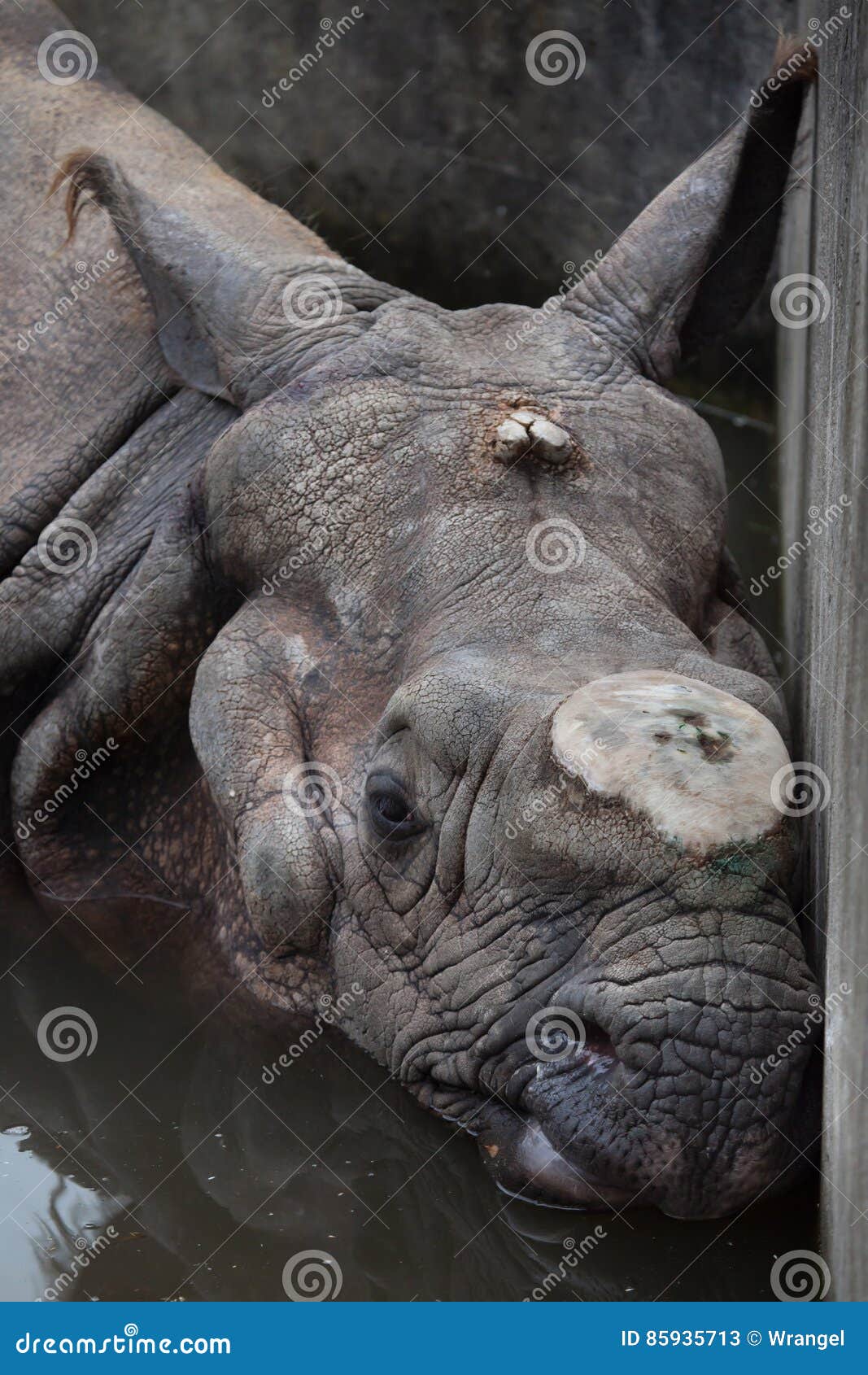
In addition to this, some authors began to call these animals “monoceros”, referring to the mythical animal. Now, despite the fact that the myth of the unicorn appeared many years before, it’s believed that the existence of these rhinos was already known. This engraving became one of the most popular pieces in Europe in the year 1515. He exaggerated its features and gave it a spiral horn, as well as a metallic look. This motivated the artist Albrecht Dürer to make an engraving of this species for the first time without ever having seen it. However, as people knew so little about them, it was thought that they actually did have armor.

#RHINOCEROS UNICORNIS SKIN#
Among them was one that depicted a huge animal, with armored skin and a horn for a nose.Īs you can imagine, this one was referring specifically to the Indian rhinoceros. In fact, quite often, the only source of information were the stories told by some travelers, which were modified over time. The appearance of beings with strange characteristics in times past was fostered by the lack of images to support what was seen. Although the appearance of the rhinoceros and this mythical animal aren’t very similar, some think that it could have served as an inspiration in the unicorn’s creation.

In ancient times, the unicorn was depicted as a horse, the forehead of which had an elongated, spiral horn. It appears that the incisors and some muscles are better developed in males. Moreover, the individuals of the species are very similar between sexes, however, an article in the scientific journal Journal of Mammalogy mentions that they do have certain sexual dimorphism. The body of this giant has brown or bright gray tones, which most of the time is darkened by the land of its habitat. In addition, its skin has several folds along the body, which give it the appearance of wearing armor, almost like that of a samurai. The signature characteristic of this mammal is the conical horn that protrudes directly from its nose, which can be more than 50 centimeters (20 inches) long. In addition, it’s capable of maintaining speeds of up to 56 kilometers per hour (35 mph), while in the water it’s also an excellent swimmer. Likewise, its weight isn’t far behind, reaching more than 2 tons. Indian rhinoceros are extremely large, imposing animals, as they can reach sizes of 3.5 meters (11.5 feet) in length and 1.8 meters (5.9 feet) in height. Physical characteristics of the Indian rhinoceros In general, an excellent home for this mammal will be one with abundant plants and grass, with a body of water nearby. However, it can also live in swamps and some forests. At present, these mammals are restricted to protection zones in India and Nepal.Īs mentioned, the natural habitat of this species is mainly the alluvial plains. However, during the 1960s, its population decline caused it to be confined to the Chitwan Valley region. This rhinoceros used to be well distributed near the alluvial plains of the Ganges, Brahmaputra and Sind rivers, between the Indoburmesa border and Pakistan. Read on and learn more about this gigantic specimen. Its scientific name is Rhinoceros unicornis and it’s one of the 5 types of rhinos that exist in the world.

In addition, its population has been fighting an intense battle against extinction, as several different problems have caused it to be on the verge of extinction. The Indian rhinoceros is one of the most peculiar mammals that exist, as its “armor” and its unique horn have led it to be immortalized in the media and art.


 0 kommentar(er)
0 kommentar(er)
